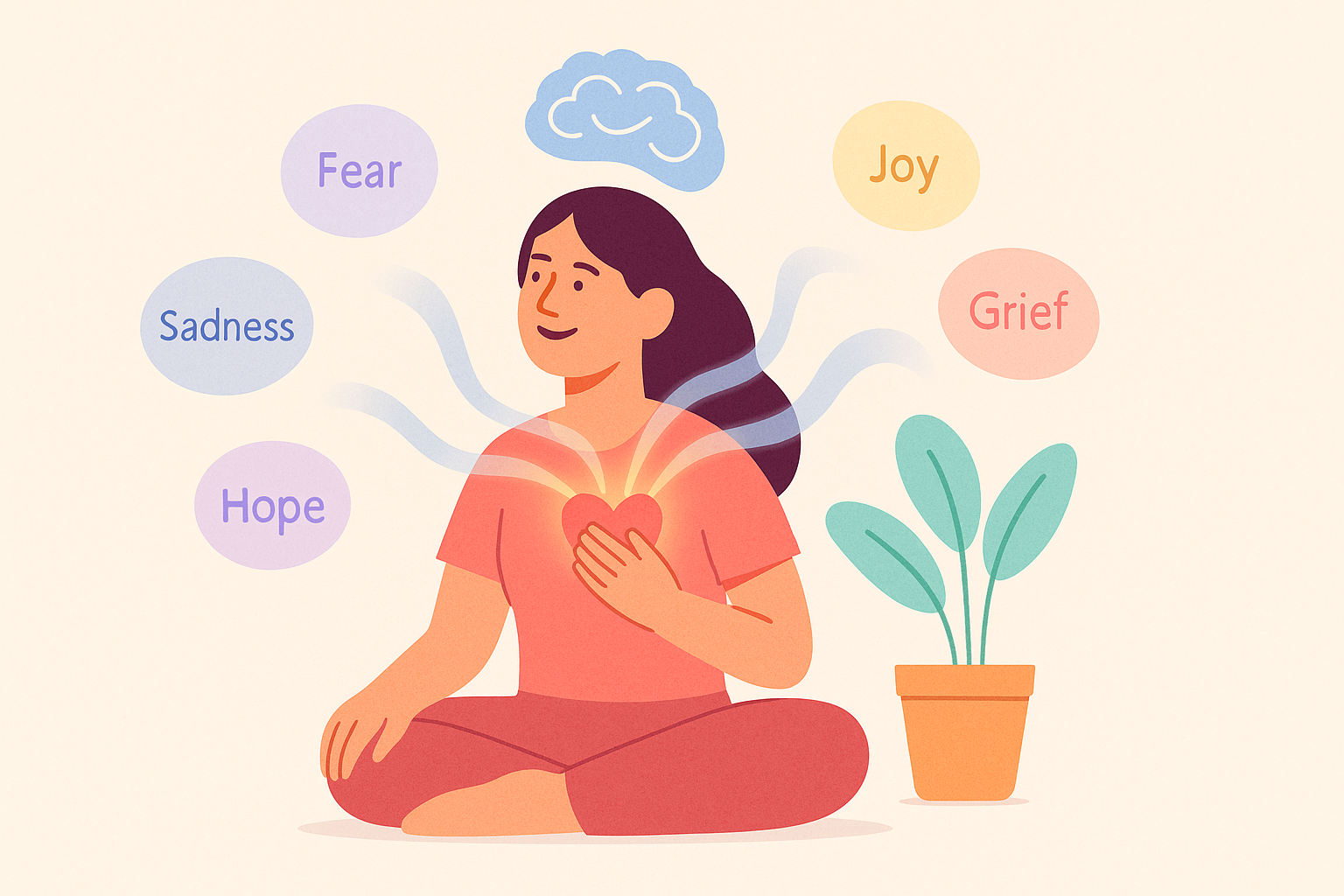The Healing Power of Emotion: Why Feelings Are the Core of Human Growth

The Healing Power of Emotion: Why It Matters
What if emotions weren’t something to suppress, control, or “fix” but the very key to healing, resilience, and growth?
This is the powerful idea behind The Healing Power of Emotion: Affective Neuroscience, Development & Clinical Practice, edited by Diana Fosha, Daniel J. Siegel, and Marion Solomon. Combining neuroscience, developmental psychology, and clinical wisdom, the book reframes emotions not as problems, but as pathways to transformation.
Emotions as the Foundation of Being Human
For decades, Western culture has tended to prioritize logic over feeling. “Don’t be emotional” is advice many of us have heard. But affective neuroscience tells a different story: emotions are central to survival, learning, and relationships.
The book draws on cutting-edge research showing that emotions:
- Organize our experience of the world.
- Drive attachment and connection.
- Shape memory, identity, and resilience.
- Serve as the raw material for healing when fully experienced and expressed.
Far from being obstacles, emotions are essential guides. To ignore them is to cut ourselves off from the most vital part of being human.
Core Insight: Emotions Heal When Felt and Shared
One of the book’s most important messages is that emotions must be experienced, not avoided, for healing to occur. Trauma, depression, and anxiety often develop when feelings are suppressed or fragmented.
Through clinical case studies, the authors show how therapy that welcomes emotions — rather than trying to suppress or overanalyze them — can unlock profound change.
- Attunement: The therapist’s ability to deeply resonate with a client’s emotional state.
- Attachment repair: Safe relationships can mend wounds from early relational trauma.
- Emotional processing: Naming, exploring, and expressing feelings transforms them from overwhelming to empowering.
Neuroscience Meets Development
The editors skillfully weave in neuroscience research that explains why emotions are so powerful. Brain imaging studies reveal that emotional experiences literally rewire neural circuits. Emotional attunement in childhood sculpts the developing brain, laying the groundwork for later resilience — or vulnerability.
But the message is hopeful: the brain remains plastic throughout life. With the right relational and emotional experiences, even long-standing patterns of suffering can be reshaped.
Practical Approaches in Clinical Practice
The book highlights a range of approaches that harness the power of emotion in therapy:
- Accelerated Experiential Dynamic Psychotherapy (AEDP): pioneered by Diana Fosha, it emphasizes transforming suffering through deep emotional experience in a safe relationship.
- Mindfulness-based therapies: helping individuals stay present with their feelings without judgment.
- Attachment-focused interventions: repairing ruptures in early bonds and creating new patterns of connection.
Each approach points to the same truth: when emotions are welcomed, felt, and integrated, people heal.
Why This Matters for All of Us
While written for clinicians, the lessons of The Healing Power of Emotion reach far beyond the therapy room. Every one of us relies on emotions to guide relationships, choices, and personal growth.
When we learn to respect and engage with our feelings instead of dismissing them, we become more resilient, more authentic, and more connected. In an age of rising stress and disconnection, embracing the wisdom of emotions is more vital than ever.
Looking Ahead: Emotions in the Digital Age
The science is clear: emotions are not just private experiences, but forces that shape connection and healing. What if technology could help us recognize, express, and resonate with emotions in new ways? What if digital spaces could become safer places for authentic emotional exchange?
Soon, innovative tools inspired by affective neuroscience will emerge — designed to help us engage with our emotions, understand them more deeply, and discover how they connect us to others.
Final Thoughts
The Healing Power of Emotion is a landmark work that shifts the conversation about mental health from suppression to transformation. It shows that emotions are not weaknesses to overcome, but strengths to embrace.
For anyone curious about how science, therapy, and human connection intersect, this book is both a guide and an inspiration.
And as research continues to reveal the profound impact of emotions on the brain, we are only beginning to see the possibilities for growth, healing, and connection — both in therapy and in everyday life.
*Written by the YourSecret Editorial Team